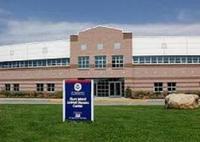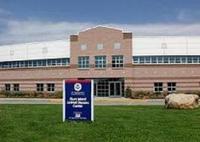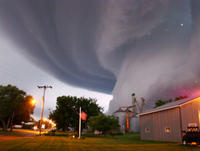-
New biodefense centers offer modernized approach, face criticism
A new facility at Texas A&M University is one of three new biodefense centers created by the U.S. Department of Health and Human Services (HHS) to revolutionize the way fatal viruses are countered in the event of an emergency. The $286-million lab features mobile clean rooms that can be detached and moved to form different production or testing systems as the need arises. Not everyone agrees that the design and capabilities of the new center would offer the best response to biothreats.
-
-
Amid controversy, Boston City council debates banning Level 4 Biolab
Boston has long been seen as “America’s Medical Capital,” but that may soon change if the city passes a measure to ban Level 4 Biolab disease research at Boston University’s National Emerging Infectious Diseases Laboratory – research which includes deadly and untreatable strains that could decimate an exposed urban population in the event of an accident or terrorist activity.
-
-
Concerns grow over repeated safety failures at U.S. BioLabs
According to a report that was released by the Government Accountability Office (GAO) late last month, the United States is at a high risk for accidents at laboratories which conduct research on potential bioterror germs such as anthrax because federal officials have failed to develop national standards for lab design, construction, and operation.
-
-
Audits find “troubling” security flaws in CDC labs
Laboratories at the Centers for Disease Control Prevention (CDC) have been cited in government audits for failing to secure bioterror agents such as anthrax and plague. The audits also found that employees handling these agents have not been trained properly to do so.
-
-
DHS awards contract for utility plant at the Kansas biolab
DHS has awarded a $40 million contract to build a utility plant at a $1.15 billion animal research lab in Kansas. The 87,000 square foot facility will replace an animal research lab on Plum Island in New York and will be used to research deadly animal diseases that affect livestock.
-
-
Government considering options for post-biolab Plum Island

The Plum Island biolab, located on an 840-acre island of the tip of Long Island, has always been shrouded in mystery owing to the sensitive nature of the biological research done in its high-security facilities; now the center is being shut down by DHS, and the government is considering several options regarding what should be done on the island and the research facility
-
-
New U.S. biodedfense R&D network launched
On Monday, Texas A&M System dedicated a new research center which is part of a national network of centers aiming to develop strategies and products to counter bioterrorism, chemical and radiological attacks on the United States, and better strategies to deal with pandemics; the network will have facilities in Texas, Maryland, and North Carolina; the Texas dedication is the culmination of a Manhattan Project-like program for biological countermeasures, launched in 2004 by the Department of Health and Human Services; the research network aims to develop “rapid, nimble and flexible approaches” to vaccine and therapy development, and train the next generation of professionals to sustain U.S. capabilities in these areas
-
-
Scaled-back Kansas biolab would meet U.S. needs

A report by the National Research Council says that it is “imperative” that the United States build a large-animal biocontainment laboratory to protect animal and public health; two options are acceptable: a $1.4 billion Biosafety Level 4 laboratory in Manhattan, Kansas, or a scaled-back Kansas lab tied to a distributed laboratory network in other facilities; a third option will not meet U.S. needs: maintaining current capabilities at Plum Island Animal Disease Center, because the Plum Island facilities do not meet current standards for high biocontainment
-
-
Report: Updated DHS risk assessment of Kansas lab still “technically inadequate”
Congress was unsatisfied with a 2010 DHS risk-assessment study of the proposed National Bio- and Agro-Defense Facility (NBAF) in Manhattan, Kansas, and asked for a new study of the risks, and an evaluation of the new study by the National Research Council; the evaluation says that some of the risk reduction noted in the new DHS risk assessment may be explained by improvements to the latest design plans for the facility, but that despite these improvements, the updated DHS assessment underestimates the risk of an accidental pathogen release and inadequately characterizes the uncertainties in those risks
-
-
Budget, safety concerns cast doubt on Kansas BioLab
Uncertainty continues to surround the National Bio and Agro-Defense Facility, or NBAF, which is scheduled to be built on the campus of Kansas State University in Manhattan, Kansas, to replace the aging Plum Island facility; the price tag for the lab has increased from $415 million to an estimated $1.14 billion, and concerns about the safety of building a Level-4 BioLab in the middle of tornado alley are yet to be fully addressed
-
-
Kansas fights to keep bio lab project alive

Still reeling from the shock of finding out that the administration’s budget proposal does not contain any construction funds for the $650 million Bio Lab Level 4 facility in their state, Kansas political and business leaders vowed to fight to keep the project alive, including looking for alternative funding sources; the bio lab was considered the anchor of what is called an Animal Health Corridor stretching from Kansas State University in Manhattan, Kansas, to the University of Missouri in Columbia, Missouri
-
-
Kansas biolab project on life support

In 2008, DHS chose Manhattan, Kansas, as the location for a new, $650 million BioLab Level 4; the new lab was planned as a replacement for the aging Plum Island facility; critics argued that the lab’s location — in the middle of Tornado Alley and at the center a region which is home to a large portion of the U.S. beef industry – was not ideal for a facility doing research on deadly animal and human pathogens; it now appears that budgetary considerations have doomed to project
-
-
Lack of use leads federal counterterror labs to find work elsewhere
Counterterrorism laboratories originally set up to test for dangerous biological or chemical substances have increasingly been used to assist in non-conventional tasks like testing oysters for shellfish contamination or identifying synthetic marijuana
-
-
Federal court hears debate over California bio weapons research facility

Earlier this month opponents of the bioweapons research center at Lawrence Livermore National Laboratory argued before a federal appeals court that government officials failed to heed a 2006 court ruling and recklessly went ahead with the research facility without considering terrorist threats
-
-
Kansas State takes over pathogen research from Plum Island
As New York’s Plum Island Animal Disease Center begins to shut down, much of its pathogen work will be transferred to Kansas State University’s Biosecurity Research Institute in preparation for the opening of DHS’ new National Bio and Agro-Defense Facility (NBAF) in nearby Manhattan, Kansas
-
- All
- Regional
- Water
- Biometrics
- Borders/Immig
- Business
- Cybersecurity
- Detection
- Disasters
- Government
- Infrastructure
- International
- Public health
- Public Safety
- Communication interoperabillity
- Emergency services
- Emergency medical services
- Fire
- First response
- IEDs
- Law Enforcement
- Law Enforcement Technology
- Military technology
- Nonlethal weapons
- Nuclear weapons
- Personal protection equipment
- Police
- Notification /alert systems
- Situational awareness
- Weapons systems
- Sci-Tech
- Sector Reports
- Surveillance
- Transportation
Advertising & Marketing: advertise@newswirepubs.com
Editorial: editor@newswirepubs.com
General: info@newswirepubs.com
2010-2011 © News Wire Publications, LLC News Wire Publications, LLC
220 Old Country Road | Suite 200 | Mineola | New York | 11501
Permissions and Policies
Editorial: editor@newswirepubs.com
General: info@newswirepubs.com
2010-2011 © News Wire Publications, LLC News Wire Publications, LLC
220 Old Country Road | Suite 200 | Mineola | New York | 11501
Permissions and Policies
